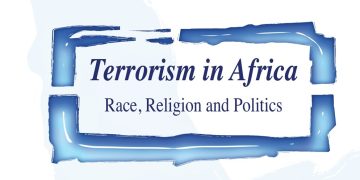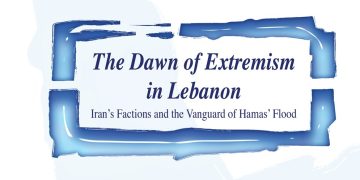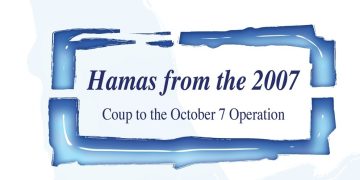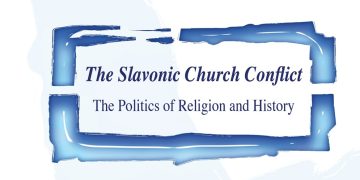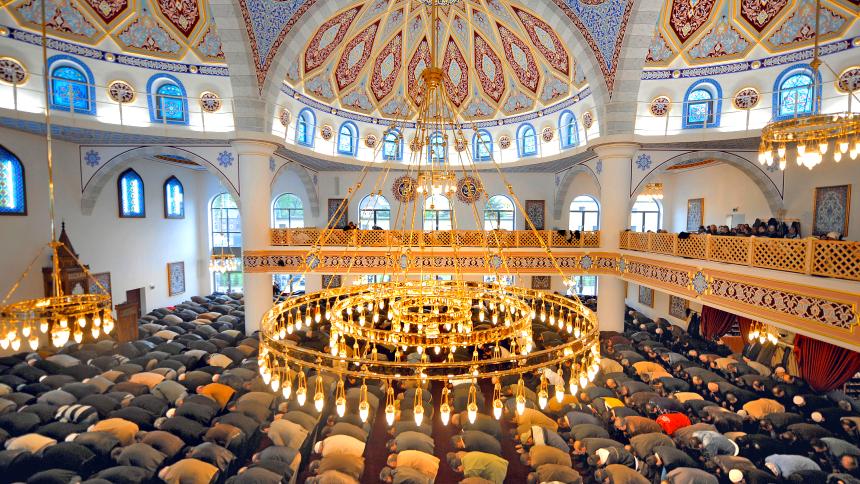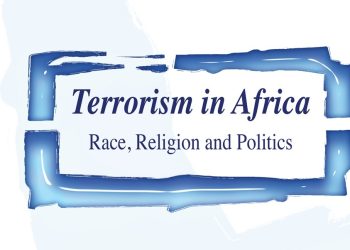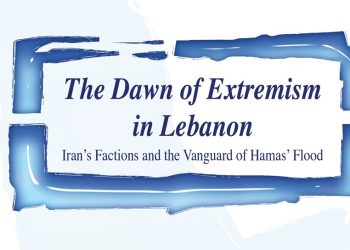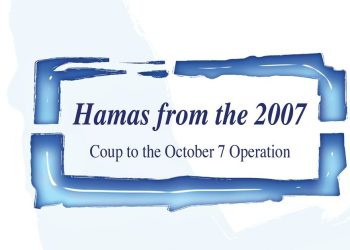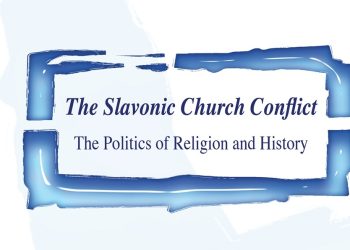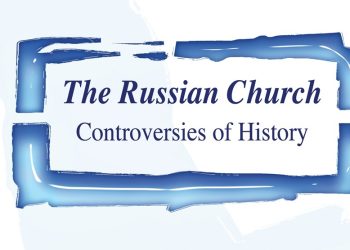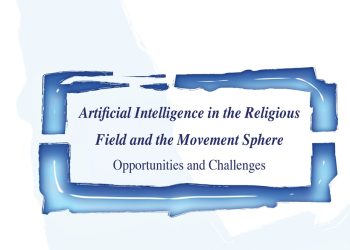by Mohammed Hashas
The number of Muslims in Western Europe is estimated at 15 million, and was recently projected to increase by the year 2050, according to Pew Forum of 2015, to ten percent of the overall population.[1] This Muslim part of the population hails from numerous countries and ethnic, linguistic, cultural, and political backgrounds. The diversity it brings, and has already brought, with it to Western Europe has not been easy to manage on various socio-cultural, political and economic levels. This diversity has also encountered the diversity of Western Europe itself, which has made the encounter, however multiculturally enriching to examine, demanding on every level.
Muslim and Christian religious traditions have different histories with politics, and have different conceptions of religious authority and hierarchy. Islam does not have a Church (i.e. Mosque) in the sense of a Pope. That is, Muslims have no “one voice” that unites them as a religious community when they need to speak to or with the state on controversial matters that concern society. Recently created councils of Muslim communities (mostly after September 11, 2001) have been unable to gather the diverse Muslim community under their umbrella. The reasons vary, and include their lack of legitimacy among the mass of believers; the controversial role of international Muslim preachers and scholars such as Yusuf Al Qaradawi in Doha or Amr Khaled in Egypt or Zakir Naik in India; and the role of “Islam of the embassies.” There has been recently an increasing interest in the study of imams in Europe and their potential roles — especially in combatting terrorism and contributing to integration. Imams appear to be gaining new influence that they did not enjoy previously.
The contention of this article is that the “imamate” (al-imāma) in Western Europe is experiencing a shift with respect to its religious discourse and its relations with state institutions and with society. That is, despite their overall weak training in Islamic classical studies as well as modern social sciences, some imams appear to be making an effort to represent the ethicist messages of Islam, a role that enables them to serve as a local guardian of faith and arbiter of identity among believers. However, this recent highlighted interest in the imamate through the calls for the formation of imams in national institutions, for national values and with national funds, does not appear to make of it an independent Islamic religious authority that can alone lead the community and speak for it institutionally (i.e. politically) and theologically. The paper briefly describes the historical place of imams and the functions of the imamate in Islamic scholarship, as well as their roles as local guardians of faith and identity in differing political contexts. It then reviews the migration of Imams to Europe post-World War II by way of context to their present situation. It next summarizes recent socio-anthropological research on imams in France. The article concludes with some observations about the many expectations now being placed on imams, at an age when online and satellite television grants new generations of European Muslims a range of alternative sources of information about their religion.
Imams as Local Guardians of Faith and Identity: Traveling to Western Europe
In Islamic history, the imam had always had an important role, but not a leading role — neither institutionally nor scholarly. At the institutional level, imams belonged to and led a local community, which was part of a larger one. They followed the religious jurisprudential school (madh’hab) of the larger community.. When asked by locals about issues of religion, they refer redto the madh’hab their larger community or geography followed. For example, Moroccan or North African imams adopted the Maliki school because it was the one adopted at the state level, and before that at the level of empire or sultanate — while also showing deference to to customary law, or ‘urf. Scholarly speaking, these imams did not need to have a higher education in Islamic seminaries to practice the imamate. What was required of them was basic knowledge of Islamic teachings and ethics, and memory of good part or all of the Qur’an for recitations in daily prayers and during the sacred month of Ramadan. Imams did not give fatwas, but rather “copied” fatwas from the scholars of their madh’hab that was adopted by the state or communal consensus. They were not muftis, nor ‘ulama (sing. ‘alim), which are higher scholarly positions.
In earlier periods of Islamic history, by contrasts, some seminal scholars — notably, the founders of the Sunni madhabs (Imam Abu Hanifa, Imam Malik, Imam al-Shafi‘i, and Imam Ahmed ibn Hanbal), worked also as muftis and imams. But for the most part, imams in Islamic tradition did not have a high institutional or scholarly position that could allow them to speak for believers beyond their immediate locality.
The study of imams and the imamate is a very recent phenomenon in modern societies, including Islamic majority societies, for two main reasons.[2] First, a simple review of the content of classical Islamic scholarship does not direct one to chapters or clauses dedicated to the position of the imam and his roles. What one finds instead are chapters dedicated to prayers, mosque ethics, and mosque management, only within which does one find some a few paragraphs or pages on the imams themselves. Neither the Quran nor the prophet tradition uses or emphasizes the term “imam” as we know it today, namely “the leader of prayers and the mosque” only. When used in these contexts, the imam or imamate referred to is leadership of the entire “umma” (Muslim community) — in the sense of al-imama al-kubra, which is not different from what the Caliph and Caliphate, or wali al-amr means in Sunni tradition. (In Shia traditions, on the other hand, the “imam” has a different meaning: He is the infallible leader of the Muslim community, whose lineage goes back to the Prophet Muhammad.)
The second reason why the study of Imams is a recent phenomenon is that it originates in Western liberal societies seeking to establish institutional policies toward their new, post-World War II Muslim minority communities. Islamic religious authorities have not been able to reach a consensus as to integration in modern state institutions or pluralist contexts where Muslims are a minority. The imamate has consequently emerged both as a means of protecting faith and identity, and as a space of negotiating authority, be it religious, political, or both, and of constructing identities at the national and local levels. Each country in Europe tries to select “good imams” as representatives of a “good Islam” that adjusts to the particularities of the country.
After the Second World War, Europe recruited guest workers, mostly from its former colonies in the Muslim-majority countries. These immigrants traveled to the new secular and liberal space of Europe with the socio-political and religious background referred to above. In terms of religious institutional organization and community affairs administration, the community found itself functioning applying their traditional practices in an altogether new and modern context.
Europe’s practicing Muslims, or Muslims identifying as such — whose numbers would increase with especially the second generation and the so-called resurgence of Islam after the late 1960s and 1970s — would either choose a respected believer to become their leader of prayers or, later, seek to import an Imam from their own village or city in the country of origin. Because the situation of religious education in the wider Islamic world was still in the making in the postcolonial era, these imported imams had either a conservative education and were not open to modern state institutions or to liberal multicultural society, or were not trained as imams at all, but were laymen who had learned the Quran, or part of it, by heart at the madrasas, and not at modern schools or universities. For the most part, all they could do was to lead prayers as an extra responsibility the community shouldered them with or which they took willingly as a divine call. This irregular functioning of the imam in Western Europe would bring challenges and changes to the role he traditionally had had in Muslim-majority societies.
Meanwhile, state interference in the religious affairs of the community of immigrants also manifested. Postcolonial states of the broader Middle East and North Africa, as well as South Asia, established their versions of an “embassy Islam” to attempt to influence the religious identity and communal ties of their respective diasporas abroad, as well as secure economic benefits from them through remittances. “Embassy Islam” also represented an attempt to combat transnational Islam, or “political Islam”, which was seen as a threat to the legitimacy of political authority in the European Muslim immigrants’ countries of origin.[3]
European states, on the other hand, were not particularly interested in these matters initially. The immigrants were guest workers who were expected to return home after the expiration of their work contracts. So the European state found it more convenient to generally “outsource” the care for the religious needs of these immigrants to the governments of the countries whence they came, and to petrodollar-rich Gulf countries.[4] Moreover, employing companies would sometimes provide room prayers for the workers as a sort of perk in lieu of satisfying their demands for better work conditions and higher salaries. Workers then appointed their own imams to lead prayers and perform the needed rituals. Friday sermons were prepared by some Islamist groups, filling the ideological void.[5]
After the terrorist events of September 11, 2001, European states increasingly adopted laws to tighten surveillance on radical movements and preachers whose activities could endanger public security. They also sought to find ways to work through some imams to promote the values of liberty and equality among their flocks. In the process of attempting to “tame imams,” France, for example, deported some 12 imams in 2004, in some cases because they did not condemn polygamy or the practice of husbands beating their wives. After the London bombings of July 7, 2005, Great Britain identified some 50 imams for deportation for having made statements that endangered public security. But the move risked violating the European Union treaty forbidding deportations of suspected criminals to countries where domestic security and intelligence services employ torture. Thus the British government signed contracts with some Middle Eastern governments to pledge humane treatment of detainees upon repatriation.[6] In 2007, a report commissioned by the European Commission (DG-Justice, Freedom and Security), and prepared by experts at Kings College, found that “radical imams” were no longer the magnets of radicalism, and highlighted the emergence of new Islamist militant recruitment activity online.[7] The Internet, the report found, had “opened up new spaces of religious contestation where traditional sources of authority could be challenged by the wider public.”[8] Some sociological, anthropological, and theoretical scholarly works found , buy contrast, groups for optimism that Internet discussions of Islam could prove a liberalizing force.[9] Concern about European Muslim radicalization heightened overall in the years that followed, after ISIS established its “caliphate” in June 2014. Among 11,000 “foreign fighters” who joined the group from across the world, a study found 1,500 to be European Muslims, including women and adolescents, Muslim-born Europeans and converts alike.[10]
Violent incidents contributing to the sense of alarm included the killing of four people in the Jewish Museum of Brussels on May 24, 2014 by a French citizen, Mehdi Nemmouche, who had spent the previous year fighting in Syria; and the massacre of the Charli Hebdo journalists on January 7, 2015 in Paris, perpetrated by the brothers Kouachi who belonged to the Al-Qaeda network in Yemen. Both spoke to the dangers of radicalization via “digital Islam” in particular. To face such a challenge, on several occasions, internationally recognized Islamic scholars came together to condemn violence in the name of religion. Witness the statement by 125 Islamic scholars who condemned “ISIS-Daesh” as not only non-Islamic, but anti-Islamic.[11] Muslim religious leaders at the international, national, and local levels came out to speak against such atrocities.[12] Imams themselves called for “reclaiming the Internet” from violent jihadists.[13] Female Muslim leaders also came out to challenge not only the violent jihadists but also the moderate-conservative religious authorities that had not allowed them to lead prayers.[14] Another challenge emerged from gay imams who tried to provide for the spiritual needs of lesbian, gay, bisexual and transgender Muslims, rejected by most other Muslim leadership figures.[15]
The Imamate in France: Synthesis of Socio-Anthropological Work
Between its population of five million Muslims and the 1905 law of laȉcié, France provides an interesting case study as to how the imamate is developing. The country hosts some 1,555 mosques, 2,147 places of worship (musalayat, not all of them proper mosques), and 1,300 imams. In light of the 1905 law, the state cannot fund religious institutions, but can protect their cultural heritage and buildings and provide chaplains in state institutions. The region of Alsace-Moselle is exempt from the 1905 law because it was not under French jurisdiction at the time of the adoption of the law. Public schools and universities cannot have religious titles, like “Islamic studies,” “theology,” or “religious education.” However, there is Free Faculty of Islamic Theology in Strasbourg, since it is located in the exempted region of Alsace-Moselle.[16] In light of the overall restrictions, Islamic community affairs depend mostly on local donations and overseas benefactors. With various increasing events of local protests and international terrorism, training imams appeared as a priority in the last ten to 15 years, which saw efforts to organize the religious affairs of the Muslim community. But institutional barriers and lack of the requisite finances contributed to making the field of the imamate still in its embryonic stages, and posed various challenges, which this article synthesizes and reflects on below.
The following are the principal institutions offering academic training and degrees for students aiming to serve as imams and Muslim community leaders: L’Institut Francais des Sciences Islamiques (IFESI – The French Institute of Islamic Sciences; L’Institut Europeen des Sciences Humaines (IESH – The European Institute of Human Sciences); the Shatibi Center; The Centre de Recherche sur L’Islam (CERSI – Centre of Research on Islam); a center of education affiliated to The Grande Mosquée de Paris; and The Free Faculty of Islamic Theology in Strasbourg since 2012, financed by the Turkish Diyanet and accredited by the University of Istanbul, which recognizes its courses and degrees.[17]
Two major socio-anthropological works came out in 2013 as a result of six years of fieldwork for each: Romain Sèze‘s Being an Imam in France and Solenne Jouanneau’s Les Imams en France.[18] Their findings depict the status of the imam and transformation of his religious position. I will summarize their results in terms of three major benchmarks :
1) Imams’ lower education and socio-economic status contribute to making them dependent on “‘Ulama” scholarship. Eight out of the thirty imams Sèze interviews are what he refers to as “imam-labourers.” They are minimally educated if at all.[19]. Such imams were typically preferred to lead prayers by their own community of fellow workers because they are pious or know some QUr’an by heart. “Imam-labourer” in Sèze’s work is the equivalent of Jouanneau’s typology of the “indigenous-invisible imam.”[20] Eighteen out of the 30 imams, by contrast, had some religious educational background, typically from learning institutions in their countries of origin in the Islamic world. These figures had not traveled to Europe to be imams but rather found themselves making a living out of the profession because they had no other choices. Educated imams were found to be more confident of themselves, charismatic, and knowledgeable, and thus gained more respect in their communities. Over time, they found their ways to becoming imams in larger mosques. in big cities. Only one out of the thirty served Imams had actually received a diploma of training as an imam in France.[21]
As to their socio-economic status, imams in France are not state-funded. Depend on their countries of origin or on community associations for their living, imams are typically in bad economic conditions; a lot of them do not enjoy health coverage. This impacts their social standing; no one wants to be trained as an imam only to turn out jobless or badly paid,[22] including the students who enroll in the imams training program which the state has recently tried to offer in cooperation with the Faculty of Islamic Theology in Strasbourg. Economic factors also explain the lack of imam-chaplains in the military, prisons, hospitals, and schools.[23] The dire economic situation of imams is particularly visible among imams of Moroccan origins, because they did not enter France to do the job, but only ended up doing it because of the needs of the community and their own need for some stipend, however low. By contrast, their Turkish and Algerian counterparts more often enjoyed better pay, in light of support they received from their countries of origin.[24] Overall, the imams’ limited education, coupled with their vulnerable socio-economic conditions, contributed to making them dependent on ulema scholars, a position imams have historically held.
2) Politics and state construction of the “good imam.” Jouanneau’s study of thirty imams and mosques in eastern and southern France reaches two main conclusions (one of which will be explained in a subsequent section). Through her access to numerous state archives, statements, and municipal police documents, she determined that the French authorities did intervene in the internal affairs of the Muslim community. For instance, the French authorities played a role in the selection of the imams to be sent to its territories, following the conventions that were signed for that reason with the Turkish and Algerian authorities. This phenomenon is what Jouanneau refers to as the “consular imam,” or what French authorities refer to in their documents as the “good imam.”[25] The French authorities signed conventions with two state universities to train imams, but the results were poor because the institutions were either boycotted or distrusted by the Muslim community and Muslim representative bodies. Some of these programs closed their doors, purportedly for lack of funds.[26]
These studies showed that the French authorities lack their own established religious institutions or “ulama,” and have had to rely on the importation of “good imams” willing to commit to an apolitical position in a secular-liberal society.
3) Imam’s role as an identity marker of the community of believers in a multicultural-liberal society. Three further conclusions can be gleaned from the two socio-anthropological works referred to above. First, institutionally, the imam co–administers the community of believers and is its symbol of identity. Second, socially, he is interactive and close to the community. Third, theologically, he is an eclectic-ethicist.
First, institutionally, the imam does not lead the community alone; he co-administers it with the rector or director of the mosque, or with the head of the Islamic cultural association that is in charge of the prayers’ hall. As most imams hail from Muslim-majority countries, some of them in small communities enjoy a modest educational level, and may barely speak the local language. Thus they are unable to serve as spokesperson for the community on behalf of the French authorities with regard to legal issues, or engage other religious denominations in religious dialogue and civil society activities, or with the media when it seeks religious authorities to comment on a range of issues. An “indigenous-invisible imam,” in Jouanneau’s words — or the “imam-labourer” in Sèze’s words — is unable to play the role of communicator for the community. His educational level is often a barrier. It is rather the rector of the mosque or the director of the association, often better educated, who carries out the tasks of external communication.
Instead, the imam becomes more a cultural symbol of the community. He leads prayers, gives Friday sermons and the two major Eid sermons, and leads the funerals. He also plays the role of matchmaker for young couples, because he knows the community and helps Muslims find their partners for marriage. He may also intervene in solving family conflicts or arbitrating in cases of divorce.
The imam has also acquired new roles relating to Muslims’ sense of identity as opposed to their relationship with the core creed of Islam. One example concerns marriage ceremony: Many families now organize part of the wedding party in the mosque, and in the presence of the imam who, reads the fātiha Quranic verse and blesses the marriage, after it has gone through civil legal authorization and authentication. In the past, Islamic marriages did not require the presence of the imam but only the presence of a lay legal authority.[27]
Socially, the educated imam is interactive with the community of believers, and thus close to it. Drawing from his observation of the imam in Assalam (anonymous) Mosque, Jouanneau notes that there is interaction [emphasis added] in his work; he does not dictate opinions on issues the community raises. For example, when asked about the permissibility of adopting children or listening to music in Islam, the imam gives the mainstream and classical Islamic view, and cites the permissibility given by other Islamic classical scholars — but the interlocutors make their own choices. One of the questioners defends the idea of adoption after the imam rejected it. Another listens to music despite his opposition.[28]
A second example of interactive relations between the imam and his community is the case of putting a dividing line in the mosque to separate women and men. The imam rejects the dividing line, but community elders and administrators of the mosque insist upon erecting it.[29] A further example concerns a lady — a teacher — who has been on parental leave for some years. She is considering returning to her job, after the French ban of the veil, and plans to consult the imam of the mosque. Yet she states beforehand that she may not follow what he says: She anticipates that he will tell her that most Islamic scholars consider the veil mandatory for women – and would oppose that view a priori.[30]
Theologically, with an emphasis on law, the imam finds himself serving an eclectic-and- ethicist role. The imam is in a secular-liberal society, and his discourse has to adjust to the law of the country, as well as the level of religiosity of the believers he talks to. Only three out of the 30 imams interviewed by Sèze were licensed to issue fatwas: Two were recognized by Turkish authorities and the third. A third, Shiite imam, received a certification in Lebanon (and a PhD in the Sorbonne afterwards); he issues fatwas as well as divorce certificates that are recognized by Lebanese authorities, an indication of his religious scholarship and reputation.[31] These imams-muftis, along with a handful of other imams such as the public figures Tareq Oubrou and Hassan Iquioussen, speak of the necessity of an eclectic approach (attalfiq) that is rooted in the tradition but is also informed by legal theories, calling for flexibility in light of the particularities of French society and culture.[32]
Eclecticism means that a single Muslim legal school may not on its own offer adequate answers to the issues believers of various races, genders, ages, and political identities face. So, in order to stay rooted in the tradition while adaptive to the new secular-liberal context, the imam must strengthen his adaptive approach by emphasizing some aspects of the tradition that he considers more basic at the expense of others that the context makes appear obsolete or not applicable. Thus when most imams interviewed discussed homosexuality, for example, they stressed the idea that it is religiously unacceptable, but added respect for their humanity as a side note and called for respect for the rule of law in France.[33] Sharia law is ethicized[34] in the sense that it is considered an ethical responsibility that targets (1) the individual and his internal communication with God, (2) family care and protection, and (3) the environment or the outside world with which the believer has to be engaged ethically and responsibly in defense of social justice.[35] Values like respect, forgiveness, and dedication at work are emphasized as fundamentally Islamic.[36]
This is not the case with all imams, however. Some ambiguities manifested among imams who did not straightforwardly preach gender equality, or spoke derisively about homosexuality and abortion.[37] The overall tone of the 30 sermons scrutinized in the study was conciliatory in the sense that while they invoked eschatological arguments and the world of judgment and punishment (attarhīb), they also invoked the importance of the “here-and-now” through ethical engagement as just depicted above (attarġīb).[38]
Conclusion
Three main conclusions arise from the French case studies.
First, French religious authorities are not, in their present state of disorganization and dependence, capable of changing the discourse on Islam in their country, let alone the broader continent of Europe. To do so would require nurturing and guidance from greater religious or political powers. This in no way belittles the fundamental role of the imamate in the transmission of messages to the community of believers with which it is in direct contact, and to the community of non-believers as well since some imams are also present in inter-religious dialogue initiatives, or in media channels as representatives of their community and religion. As the imamate is not an independent religious authority, the authorities that influence it should be examined, since states do interfere in religious affairs directly or indirectly. That is, the neutrality of the modern secular state should be examined to see how far it is influencing the internal dynamics of religion, and its religious actors. At the same time, the religious authority that the imam clings to or which influences his thought and work has to be examined as well to understand its sources of influence, be they intellectual or financial. Doing so will allow scholars to understand the dynamics of religion in modern contexts, whether they are impacted by state institutions, bilateral agreements between European and Arab-Islamic countries, transnational movements, or other elements. Further comparative studies within and outside Europe can shed further light.
Second, the notion of the ethical role played by some imams merits further more examination as well. Ethics appears to have become a dominant discourse not only among modern Islamic theologians, philosophers, and engaged scholars, whether trained in traditional Islamic universities or in modern ones. The fact that the European imam seems to be adopting this ethicist discourse may gradually herald a paradigm shift in the “episteme” of European Islam.[39] It should accordingly be asked, who influences the direction of the ethicist message — the religious authorities of Europe, the authorities “back home” outside Europe, the state, or all of the above? Are the imams transforming Islamic theology and law in a bottom-up approach, or are more a reflection of broader modern dynamics? What is the place of female leaders-imams in these dynamics?
Third, the role of imams and their ethicist message does intertwine with the issues of Muslim youth integration and the ongoing discussion of what it means to be European. Religion in this sense can become a means of fusing various identities into a more holistic civic identity. But can the imam be the prime mover in such an effort? What about the school and its curricula, the media, and the mainstream European externalization of Islam? Has the imam missed opportunities to transmit his ethicist message to the European foreign fighters in Syria and Iraq? Or is he constrained from doing so due to his financial dependence and other factors described above? These questions remain to be adequately explored.
Mohammed Hashas is Postdoctoral Research Fellow at the Department of Political Science, LUISS University of Rome.
[1] “The Future of World Religions: Population Growth Projections, 2010-2050,” Pew Forum, 2 April 2015, http://www.pewforum.org/2015/04/02/religious-projections-2010-2050/
[2] What has developed as a fiqh of minorities, or fiqh al aqalliyāt, does not focalize in its literature the role of imams but the role of mosques, muftis and scholars of Islam, which means that the imams as an independent category or authority are considered only channels of a scholarship and not its main thinkers or leaders. The publications of the European Council for Fatwa and Research (ECFR), founded in Dublin in 1997 by scholars that theorize such a fiqh, do not devote clear space to the category of the imam and his functions. This paper, however, does not delve into the literature of minority fiqh or that of the ECFR. Rather, it examines the place of imams within the broad Islamic scholarship and its newly focalized functions. For more on the state of the art of training imams in Europe, on which there is very little, see: Jean-Francois Husson, Training Imams in Europe: The Current Status (Brussels: King Baudouin Foundation, 2007); Willem B. Drees and Pieter Sjoerd van Kiningsveld, The Study of Religion and the Training of Muslim Clergy in Europe: Academic and Religious Freedom in the 21st Century (Leiden: Leiden University Press, 2008); Juan Ferreiro, Islam and State in the EU: Church-State Relationships, Reality of Islam, Imams Training Centres (Frankfurt and Vienna, Peter Lang, 2011); Ednan Aslan, and Zsófia Windisch, eds. The Training of Imams and Teachers for Islamic Education in Europe (Frankfurt and Vienna, Peter Lang, 2012); “The Education and Development of Religious Instruction and Institutions: ‘Imam Training’ in Europe,” Institute for Strategic Dialogue, Policy Planners’ Network, March 2010, at: http://www.strategicdialogue.org/PPN_working_paper_-_Imam_Training.pdf; Dilwar Hussain and Henry Tuck, “The Education and Training of Islamic Faith Leaders in Europe: A Comparative Evaluation of Approaches in France and Germany,” Institute for Strategic Dialogue, February 2014, http://www.strategicdialogue.org/Imam_training_final.pdf; the author of this article co-organized a an international conference on the theme, “Imams in Western Europe – Authority, Training, and Institutional Challenges,” in Rome at LUISS Guido Carli University and John Cabot American University, 5-6-7 November 2014, and it is now a book project in progress, to be published in 2016; more at: http://imamsofthewest.com/.
[3] Jonathan Laurence, The Emancipation of Europe’s Muslims: The State’s Role in Minority Integration (Princeton: Princeton University Press, 2012) 42.
[4] Jonathan Laurence, “Managing transnational Islam : Muslims and the State in Western Europe” in Immigration and the Transformation of Europe, Craig Parsons and Timothy Smeeding, eds., (Cambridge: Cambridge UP, 2006) 251-173.
[5] Gilles Kepel, Les banlieus de l’Islam: Naissance d′une religion en France (Paris: Seuil, 1987) 145-153.
[6] Yvonne Yazbeck Haddad and Michael J. Balz, “Taming the Imams : European Governments and Islamic Preachers since 9/11,” Islam and Christian-Muslim Relations, 19 :2, 2215-235.
[7] Recruitment and Mobilization for the Islamist Militant Movement in Europe, EU Commission DG-Justice, Freedom and Security, and King′s College London, 2007, at: http://ec.europa.eu/home-affairs/doc_centre/terrorism/docs/ec_radicalisation_study_on_mobilisation_tactics_en.pdf
[8] Peter Mandaville, “Digital Islam: Changing the Boundaries of Religious Knowledge?” https://openaccess.leidenuniv.nl/bitstream/handle/1887/17137/ISIM_2_Digital_Islam-Changing_the_Boundaries_of_Religious_Knowledge.pdf?sequence=1
[9] Stephano Allievi, “The International Dimension,” in Brigitte Maréchal, et al., eds., Muslims in the Enlarged Europe: Religion and Society (Leiden and Boston: Brill, 2003) 449-488.
[10] Saniel Byman and Jeremy Shapiro “Be a Little Afraid: The Threat of Terrorism from Western Foreign Fighters in Syria and Iraq,” Foreign Policy at Brookings, Policy Paper N. 34, 11/2014 http://www.brookings.edu/~/media/research/files/papers/2014/11/western-foreign-fighters-in-syria-and-iraq-byman-shapiro/be-afraid–web.pdf
[11] “Open Letter to al-Baghdadi and to the Fighters and Followers of the Self-Declared “Islamic State”,” 19 September 2014, http://www.lettertobaghdadi.com/
[12] Carol Kuruvilla and Antonia Blumberg, “Muslims around the World Condemn Charlie Hebdo Attack,” 07/01/2015. http://www.huffingtonpost.com/2015/01/07/muslims-respond-charlie-hebdo_n_6429710.html
[13] Caroline Wyatt, “Imams try to ‘Reclaim the Internet’ with Haqiqah Magazine,” 27/03/2015, http://www.bbc.com/news/uk-32078681
[14] Khaled Abou El Fadl, “On Women Leading Prayer,” 20/09/2015, http://www.scholarofthehouse.org/onwolepr.html; Kathleen McLaughlin, “A Mosque of Their Own,” ChinaFile, 18/09/ 2012, http://www.chinafile.com/mosque-their-own; “Woman Leads US Muslims to Prayer,” 18/03/2005, http://news.bbc.co.uk/2/hi/americas/4361931.stm; Jerome Taylor, “First Woman to Lead Friday Prayers in UK,” 10/06/15, http://www.independent.co.uk/news/uk/home-news/first-woman-to-lead-friday-prayers-in-uk-1996228.html
[15] Afdhere Jama, “Five Imams Who Are Openly Gay,” 20/01/2015, http://islamandhomosexuality.com/5-imams-openly-gay/; Azmat Khan and Amina Waheed, “Meet America’s first openly gay imam,” 20/12/2013,
[16] Dilwar and Tuck, “The Education and Training of Islamic Faith Leaders in Europe: A Comparative Evaluation of Approaches in France and Germany,” 5.
[17] Ibid., 6-7.
[18] Romain Sèze, Être imam en France: Transformation du « clergé » musulman en contexte minoritaire [Being an Imam in France : Transfromation of the Muslim Clergy in a Minority Context], preface Olivier Roy (Paris : CERF, 2013) pp. 258; Solenne Jouanneau, Les Imams en France: Une autorité religieuse sous contrôle [Imams in France : A Religious Authority under Control] (Marseille: Agone, 2013) pp. 528. Shortened titles in English will be used subsequently.
[19] Sèze, Being an Imam in France, 39
[20] Jouanneau, Imams in France, 25
[21] Sèze, Being an Imam in France, 75
[22] Ibid.,88
[23] Ibid., 122
[24] Ibid., 47; Jouanneau, Imams in France, 296, 310, 315.
[25] Jouanneau, Imams in France, 307
[26] Ibid., 296, 310, 315
[27] Sèze, Being an Imam in France, 115-119
[28] Jouanneau, Imams in France, 454
[29] Jouanneau, Imams in France, 471; Sèze could not access women’s side but says they organize their activities under the tutelage of men, Being an Imam in France, 114
[30] Jouanneau, Imams in France, 430
[31] Sèze, Being an Imam in France,141, n. 2.
[32] Ibid., 188-189; 217. On Oubrou’s work as an imam-theologian, see Mohammed Hashas, “Tareq Oubrou’s Geotheology: Sharia of the Minority and the Secularization of European Islamic Thought,” Journal of Muslim Minority Affairs, Vol. 34, N. 3, 2014, pp. 1-21.
[33] Ibid., 192-193.
[34] Ibid., 164; 183, 212
[35] Ibid., 168-171
[36] Ibid., 48; 170
[37] Ibid., 164
[38] Ibid., 168
[39] On this, see my article “Is European Islam Experiencing an Ontological Revolution for an Epistemological Awakening?” American Journal of Social Sciences, Autumn 2014, pp. 14-49.


